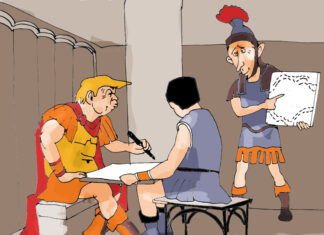YEREVAN-TRIVANDRUM, India — Arjun Krishna Lal is an Armenia and India-based author, entrepreneur, and an emerging leader in the B2B content industry, servicing the US market. While in college, Arjun started his career as a freelance journalist and B2B content specialist. From preschool to high school, Arjun lived and was educated in the United States and later continued his education under the Cambridge board in India. His education culminated in a triple major degree in journalism, psychology and English. He is the director of content at Flying V Group, Los Angeles. He is one of the co-founders of Create-On, a revolutionary New Jersey-based AI content creation startup, enabling businesses to 10X their content pipelines. His debut novel in English, Wicked Games, was published by Penguin Random House in 2014. In 2024, his novel, Life, Love, Wine. An Indian’s Strange (Sometimes Awful) Adventures in Armenia was published in Armenian (translated by Roza Grigoryan). He remains an active contributor to several magazines and specialist tech websites around the world, including PC Magazine, IGN, and Digit.
Arjun, although you are frequently invited to Armenian TV shows, I’d like to introduce you to a wider audience. While many non-Armenian writers have written about Armenia and its people, you seem to be the first to truly capture contemporary Armenia. As you wrote: “I want to write about this incredible place that I call home and about the people who became my family,” and then added: “I should say again: it is never not interesting in Yerevan.” Is that still how you feel?
After three years living in Yerevan, I can say that that is exactly how I feel to this day. A sense of belonging and community is something I’ve always wished for in life. While I was born in India, I moved with family to Cedar Rapids, Iowa, when I was just a year old. I lived there until high school, when we moved back to India. In both countries, I struggled with feelings of not quite fitting in. Speaking to friends and acquaintances I came to realize I had many of the same experiences and challenges first-generation Armenian immigrants faced in the States. When we moved back, it was more of the same but in reverse — I was never quite “Indian” enough — I struggled to make friends. My first book, Wicked Games, talks about these experiences.
I decided to move to Armenia on a whim. I wanted to go to a place that I had no connection to whatsoever and therefore none of that baggage of trying to fit in. I figured, if I was welcomed at all, it would be on my terms as an individual. I was terrified when I stepped on that first flight to Yerevan, but I wanted to give it a shot.
I wasn’t prepared for the hyurasirutyun (hospitality) and the warmth — it was the opposite of what I’d come to expect from life. I made friends; I had such an incredible amount of adventures — I was essentially adopted into my best friend’s family — my parents are visiting to attend his sister’s wedding in April. I fell in love — with a person — but also with an entire group of people. As I learned more about the struggles Armenians faced historically — and continue to face to this day — I came to value the love and acceptance I receive in Yerevan all the more – it would be easier to keep an outsider at a safe distance, or to hate or fear from a place of pain — but that is never what I experienced. All of this has had a tangible impact on my life and, indeed on my identity, the way I see myself. The majority of my friends and close ones at this point are Armenian. My content marketing business has been relocated to Armenia and I’m proud to work alongside Armenians and create local opportunities. I’m actually in India for the month, visiting family and what surprised me was, even here, Armenian’s the language I make use of the most on a day-to-day basis, whether for work, talking to friends, or watching Armenian humorous episodes. As I write these answers, I’m finishing off the last of the pnduk (hazelnut) I’d brought along.

What about this statement: “How multilayered Yerevan is! And every day I reveal this place again. Unbelievable.” Does that still ring true for you? And does this suggest that you might write another book about Armenia?









